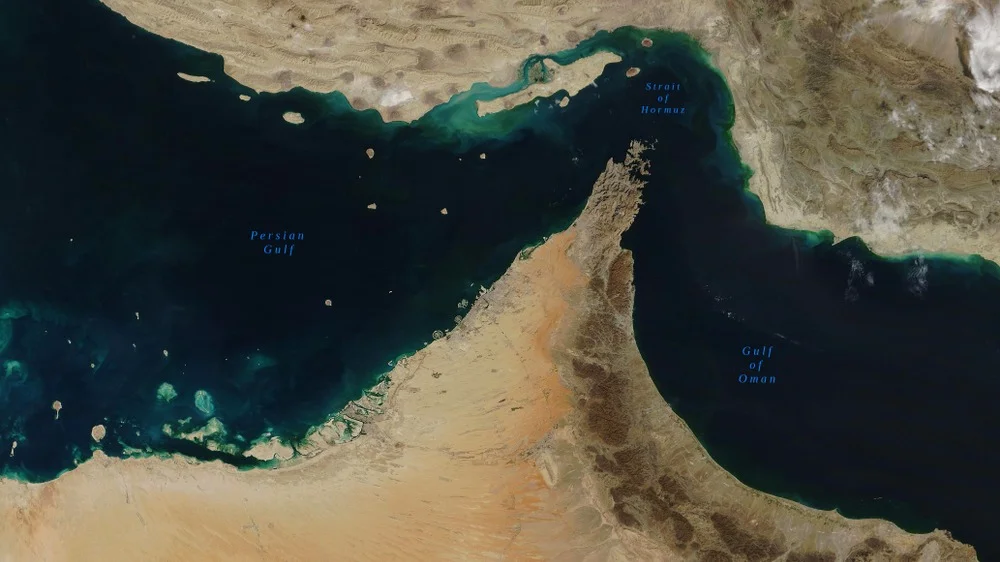What you need to know about the Strait of Hormuz - the world's most important oil transportation hub
Iran has never completely shut down a strategic waterway, but has repeatedly threatened to do so

The Strait of Hormuz, a narrow sea corridor at the entrance to the Persian Gulf, provides about a quarter of the world's oil trade and is regularly at the center of geopolitical tensions. Amid the rapidly escalating conflict between Israel and Iran, market fears are growing over the threat of disruptions to shipping in this world's most important oil transportation hub. Iran has repeatedly threatened to block the strait and attacked merchant ships passing through it. The route's vulnerability has come back into focus after Israel struck Iranian nuclear facilities and killed high-ranking military officials, raising the risk of widespread conflict;
Where is the Strait of Hormuz
This sea route connects the Persian Gulf with the Indian Ocean, with Iran to the north and the UAE and Oman to the south. The strait is about 161 kilometers long and only 34 kilometers wide at its narrowest point, with only 3 kilometers wide shipping corridors in each direction. The shallow depth makes the ships vulnerable to mines, and their proximity to coasts - especially Iranian ones - puts them at risk of attack by coastal missiles, patrol boats and helicopters, wrote Bloomberg.
What is his role
The strait is critical to global oil trade. In 2024, nearly 16.5 million barrels of crude oil and gas condensate from Saudi Arabia, Iraq, Kuwait, the UAE and Iran are transported through it every day, according to accounts by Bloomberg. The strait also plays a key role in LNG shipments, with more than a fifth of the world's volume, mostly from Qatar, also passing through this route. In 2025, more than 500 million barrels of oil and more than 3,000 ships will pass through the Strait of Hormuz each month, reports one of the world's oldest shipping publications, Lloyd's List. Finding alternative routes for such traffic is extremely difficult. According to data for the first quarter of 2025, Greece, Japan and China dominate among the owners of ships passing through the strait - they are the ones that would be most threatened if the route is closed. The most likely targets in the event of an escalation of the conflict could be ships linked to the US and Israel. However, the Red Sea crisis has shown that identifying such links is not always easy, and this increases the risks to other ships, stresses Lloyd's List.
When Iran interfered with shipping
Iran has for years used the seizure or harassment of ships in the Persian Gulf as a tool of pressure in response to sanctions and political conflicts, notes Bloomberg. Recent cases include the detention of the Israeli container ship MSC Aries in April 2024, a U.S.-bound tanker in 2023, and two Greek vessels in 2022. These actions, despite formal accusations of maritime violations, were perceived as a response to the confiscation of Iranian oil by Western countries;
Has Iran blocked the strait
Iran has never completely closed the Strait of Hormuz. During the 1980-1988 Iran-Iraq war, both sides actively attacked tankers, leading to higher insurance rates and higher oil prices. In 2011, Iran threatened to close the Strait of Hormuz in response to sanctions, but did not dare. Even now traders doubt that Tehran will take such a step: it will hurt its own exports. Besides, Iran's navy is far inferior to the forces of the US and its allies in the region. Shortly before the incident with the MSC Aries, the Iranian Navy leadership stated that Iran was capable of disrupting traffic in the strait, but preferred not to do so.
How to protect the Strait of Hormuz
In the 1980s, during the "tanker war," the U.S. Navy began escorting ships in the Persian Gulf. In 2019, an American-led naval coalition began an operation to secure shipping in Persian Gulf waters. This came after a series of attacks that Washington and its allies blamed on Iran.
Since late 2023, military attention has shifted from the Strait of Hormuz to the Bab el-Mandeb Strait, an important route between the Red Sea and the Gulf of Aden. Attacks by Iranian-backed Yemeni Houthis have made the region more vulnerable;
Who is most affected by the spill
Saudi Arabia exports the most oil through the Strait of Hormuz, but can send some volumes to Europe via a 1,200-kilometer pipeline to a terminal on the Red Sea, bypassing both Hormuz and the southern Red Sea. The UAE has also partially diversified its routes, with up to 1.5 million bpd transported via pipeline to the port of Fujairah on the coast of Oman, south of the Strait of Hormuz.
Iraq is entirely dependent on maritime exports from the port of Basra, making it one of the most vulnerable to a blockage in the Strait of Hormuz. Kuwait, Qatar and Bahrain also have no alternative routes. Iran itself also depends on the strait, but from 2021 it is using a new export terminal at Jask. By the end of 2024, its reservoirs had gradually built up oil reserves, giving Iran limited ability to bypass the strait. The bulk of the oil passing through Hormuz is bound for Asia.
Israel is the only country in the Middle East region that would not suffer direct losses in the event of a blockade of the Strait of Hormuz, noted Saudi tabloid Arab News. All oil for Israel comes through the Mediterranean Sea from Azerbaijan (via the Baku-Tbilisi-Ceyhan pipeline), the United States, Brazil, Gabon and Nigeria.
